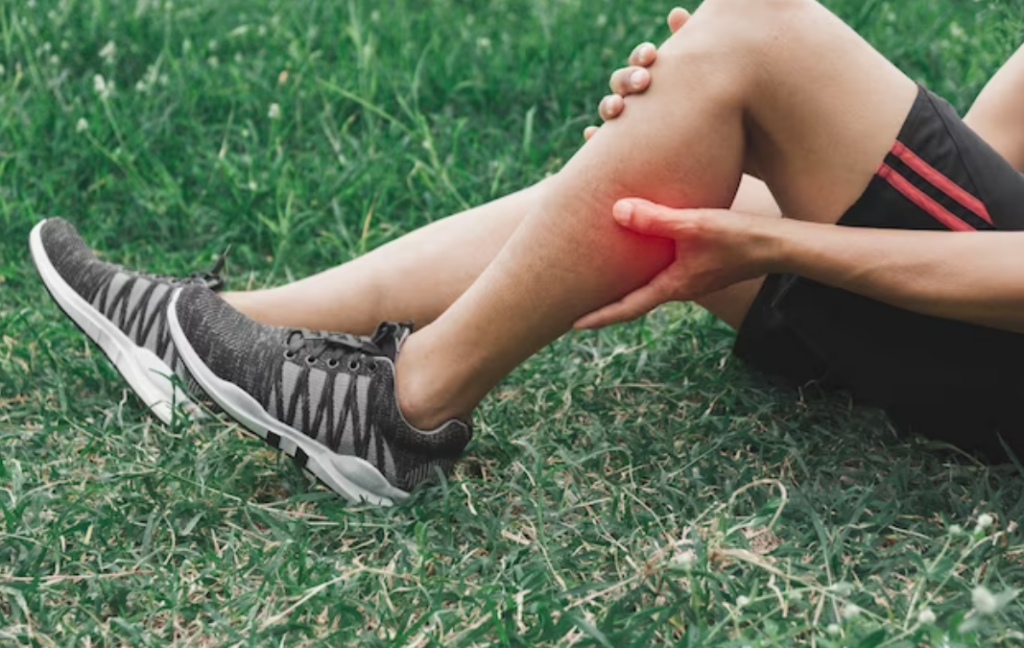If you're noticing signs of back pain in your children, it's crucial to understand the factors at play in Fort Worth. Addressing issues like posture, ergonomic furniture, and regular exercise can make a significant difference. You might be surprised by how simple adjustments, such as using both straps on a backpack or incorporating stretching routines, can alleviate discomfort. But what happens when these solutions aren't enough? Exploring the deeper connections between lifestyle choices and back health could reveal even more effective strategies.
Understanding Childhood Back Pain
Many children experience back pain at some point, and understanding its causes is vital for effective management. As a parent, you might find it concerning when your child complains of discomfort in their back. It's important to recognize that back pain in children can stem from various factors, and addressing these early can prevent further complications.
You should consider how your child's daily activities might contribute to their discomfort. Heavy backpacks, poor posture during homework, or long hours spent in front of screens can all lead to strain on their developing spine. Encouraging your child to take frequent breaks and practice good posture can be a simple yet effective way to alleviate potential pain.
Another aspect to think about is your child's physical activity levels. Lack of exercise can weaken core muscles that support the spine, making them more susceptible to injury. Engaging your child in regular physical activity, like swimming or biking, not only strengthens these muscles but also promotes overall wellness.
Additionally, emotional factors can play a role in childhood back pain. Stress and anxiety can manifest physically, causing tension in the back muscles. Creating a supportive environment at home, where your child feels comfortable expressing their feelings, can help reduce this emotional strain.
Being proactive about understanding the sources of your child's back pain is significant. By doing so, you'll be better equipped to seek appropriate solutions and guarantee your child's comfort and well-being.
Common Causes in Fort Worth
In Fort Worth, several common factors contribute to childhood back pain that parents should be mindful of. One major issue is heavy backpacks. Kids often carry excessive weight, filled with books and supplies, which can strain their developing spines.
Encourage your child to use both straps and choose a backpack with a waist strap to help distribute the weight more evenly.
Another factor is sports injuries. With so many children involved in athletics, it's not uncommon for them to experience strains or sprains.
Make sure your child warms up properly and practices good techniques to minimize the risk of injury during physical activities. You might also want to reflect on periodic evaluations with a coach or trainer.
Sedentary lifestyles play a significant role too. Kids today spend more time in front of screens than ever before, whether it's playing video games or doing homework on a computer.
Encourage breaks and regular physical activity to promote better spinal health.
Poor sleeping positions can also lead to back pain. If your child sleeps in awkward positions, it might be time to assess their mattress and pillow choices.
A supportive mattress is vital for a good night's sleep.
Lastly, stress can manifest physically. Kids often face academic pressures and social challenges, which can lead to tension in the back.
Teach your child relaxation techniques to help manage stress effectively.
Importance of Posture
Good posture plays a significant role in preventing and alleviating back pain in children. When your child maintains proper alignment while sitting, standing, or moving, it reduces the stress on their spine and surrounding muscles. You mightn't realize it, but poor posture can lead to a host of issues, including muscle tension, fatigue, and even chronic pain.
By encouraging your child to sit up straight and keep their shoulders back, you're setting them up for a healthier future.
You should also pay attention to their seating arrangements, especially during homework or screen time. Make sure their chair provides adequate support and that their feet rest flat on the floor. A desk at the right height will help them avoid hunching over, which can strain their back over time.
When they're active, remind them to keep their core engaged and maintain a neutral spine. This awareness can go a long way in building healthy habits.
Additionally, being mindful of how they carry backpacks is essential. A heavy bag slung over one shoulder can lead to muscle imbalances and back pain. Encourage your child to use both straps and keep the load light.
Stretching and Exercise Routines
To help your child combat back pain, incorporating stretching and exercise routines is essential.
Focus on improving flexibility and strengthening core muscles, as these elements play a vital role in maintaining a healthy spine.
Remember to use safe stretching techniques to prevent injury and promote overall well-being.
Importance of Flexibility
Enhancing flexibility through regular stretching and exercise routines is essential for preventing and alleviating childhood back pain. When kids engage in activities that stretch their muscles and joints, they improve their range of motion, which can greatly reduce discomfort and tension in the back.
Incorporating flexibility exercises into a child's daily routine can help them maintain proper posture, a key factor in avoiding back pain. You don't need to overcomplicate things; simple stretches like toe touches, side bends, and gentle spinal twists can work wonders.
These exercises help lengthen tight muscles and promote relaxation, making it easier for your child to move freely throughout the day. It's also important to encourage your child to participate in activities like yoga, dance, or swimming, which naturally enhance flexibility while being enjoyable.
Keep in mind that consistency is key—aim for short, daily stretching sessions rather than infrequent, longer workouts.
Strengthening Core Muscles
Building a strong core is essential for preventing back pain in children. A well-developed core provides stability and support for the spine, reducing the risk of injury during physical activities.
Here are three effective exercises you can incorporate into your child's routine to strengthen their core muscles:
- Planks: Have your child hold a plank position for 20-30 seconds. This engages multiple muscle groups, focusing on the abdominals and back.
- Bridges: Instruct your child to lie on their back, bend their knees, and lift their hips off the ground. This exercise strengthens the glutes and lower back, enhancing overall core stability.
- Supermans: While lying face down, your child should lift their arms and legs off the ground simultaneously. This targets the lower back and helps build endurance in the core.
Safe Stretching Techniques
Incorporating safe stretching techniques into your child's routine is essential for preventing injuries and improving flexibility. Start with gentle stretches that focus on major muscle groups, particularly those supporting the back.
Encourage your child to warm up first with light activities like walking or jogging in place for about five minutes.
Once warmed up, guide them through some simple stretches. The cat-cow stretch can help loosen the spine: have them alternate between arching their back and rounding it while on all fours.
Another beneficial stretch is the seated forward bend—sitting with legs extended, they can reach for their toes, keeping their back straight.
Always remind your child to breathe deeply and never push through pain. They should hold each stretch for 15-30 seconds and repeat two to three times.
Incorporate these stretches into their daily routine, especially before and after physical activities.
Finally, encourage your child to listen to their body. If a stretch feels uncomfortable, it's best to stop.
Ergonomic Furniture for Kids
When it comes to preventing childhood back pain, choosing the right ergonomic furniture for kids can make a significant difference. Investing in ergonomic furniture not only promotes healthy posture but also encourages a comfortable learning environment.
Here are three key pieces of ergonomic furniture you should consider for your child:
- Ergonomic Chairs: Look for chairs that support your child's spine and allow them to sit with their feet flat on the ground. Adjustable height is essential, so as they grow, the chair can grow with them.
- Height-Adjustable Desks: A desk that can be adjusted to your child's height guarantees they're not straining their backs while working. Standing desk options can also promote movement, reducing the risk of stiffness.
- Footrests: If a chair doesn't allow your child's feet to rest comfortably on the floor, a footrest can provide support. This helps maintain proper posture and reduces pressure on the lower back.
Role of Physical Therapy
Physical therapy plays an essential role in addressing childhood back pain by providing tailored exercises and techniques that strengthen the muscles supporting the spine. When you take your child to a physical therapist, they'll receive a thorough evaluation to identify the underlying causes of their discomfort. This personalized approach guarantees that the treatment directly targets the specific issues your child is facing.
Through a series of engaging and age-appropriate exercises, your child can improve their flexibility, strength, and posture. These exercises often involve core strengthening, stretching, and functional movements that promote better alignment and reduce strain on the back. The therapist will guide your child through each exercise, ensuring proper form and technique to maximize effectiveness and minimize the risk of injury.
Additionally, physical therapy can equip you and your child with valuable knowledge about body mechanics and posture. Understanding how to sit, stand, and move properly can greatly reduce the likelihood of future back pain. The therapist may also provide recommendations for ergonomic adjustments at home, such as how to set up a study area that supports healthy posture.
Incorporating physical therapy into your child's routine not only alleviates existing pain but also fosters long-term wellness. By empowering them to take an active role in their recovery, you're helping them develop habits that promote a healthy back throughout their life.
Embracing physical therapy is a proactive step toward guaranteeing your child's back health and overall well-being.
Impact of Sports on Back Health
Participating in sports can be a double-edged sword for your child's back health.
While it promotes fitness and teamwork, it also poses risks for injuries if not approached carefully.
Understanding how to prevent these injuries, use proper equipment, and strengthen core muscles is essential for keeping your child active and pain-free.
Sports Injuries and Prevention
Sports can be a double-edged sword for kids, offering both physical fitness and the risk of injuries, especially to the back.
As a parent, you want to encourage your child's love for sports while also protecting their health. Here are three key strategies to help prevent back injuries:
- Warm-Up and Stretch: Encourage your child to perform a proper warm-up and stretching routine before any activity. This prepares their muscles and reduces the risk of strain.
- Strength Training: Focus on building core strength. A strong core supports the spine and helps maintain proper posture during sports, which is essential for back health.
- Monitor Technique: Make sure your child learns the correct techniques for their sport. Poor form, especially in sports like gymnastics or weightlifting, can lead to serious back injuries.
Proper Equipment Usage
Choosing the right equipment can greatly impact your child's back health during sports activities. When your child participates in sports, using appropriate gear is essential to reduce the risk of injury. For instance, verify their shoes provide proper support and cushioning. Poor footwear can lead to misalignment in the spine and strain the back muscles.
Additionally, if your child plays contact sports, protective padding is a must. Helmets, shoulder pads, and back protectors can absorb impact and safeguard the spine. Make sure these items fit well; ill-fitting gear can do more harm than good.
If your child is involved in sports that require the use of a backpack, choose one designed to distribute weight evenly. Look for padded straps and a hip belt to minimize stress on the back. Encourage your child to carry only what's necessary and to use both straps to prevent uneven weight distribution.
Regularly check the condition of their equipment. Worn-out gear can lead to instability and increase the likelihood of back pain.
Strengthening Core Muscles
A strong core is essential for maintaining a healthy back, especially for kids involved in various sports. When your child engages in physical activities, a well-developed core helps stabilize their spine and reduces the risk of injury.
Here are three key benefits of strengthening core muscles:
- Improved Posture: A strong core supports proper alignment, helping your child stand tall and maintain good posture during sports and daily activities.
- Enhanced Performance: Core strength contributes to better balance and coordination, allowing your child to perform more effectively in their chosen sport.
- Injury Prevention: By stabilizing the spine and pelvis, a strong core can greatly reduce the risk of back pain and injuries related to sports activities.
Incorporating core-strengthening exercises into your child's routine can make a big difference. Simple activities like planks, sit-ups, and yoga can build strength and flexibility.
Encourage your child to focus on these exercises regularly. By doing so, you'll help them not only improve their sports performance but also protect their back health for years to come.
Techniques for Pain Management
Finding effective techniques for pain management is essential for children experiencing back pain in Fort Worth. You can start by incorporating gentle stretches into their daily routine. These stretches help maintain flexibility and reduce tension in the muscles surrounding the spine.
Encourage your child to perform simple movements, like reaching for their toes or gently twisting their torso, to alleviate discomfort.
Another important technique is applying heat or cold therapy. Using a warm heating pad can soothe tight muscles, while an ice pack can reduce inflammation.
Make certain your child uses these treatments for about 15-20 minutes at a time, guaranteeing a safe and comfortable experience.
In addition to physical methods, consider mindfulness practices. Teaching your child deep-breathing exercises or meditation can help them manage their pain and cope with stress.
These techniques promote relaxation and can be a valuable tool in their pain management toolbox.
Over-the-counter pain relief medications, like acetaminophen or ibuprofen, can also be effective. However, consult with a healthcare professional before administering any medication to confirm it's safe and appropriate for your child's specific needs.
Lastly, encourage your child to stay active without overdoing it. Engaging in low-impact activities, like swimming or cycling, can strengthen their muscles and improve their overall well-being.
Nutritional Considerations
Nutrition plays an essential role in managing childhood back pain. A well-balanced diet can strengthen muscles, support spine health, and reduce inflammation, all of which are important for kids who experience back pain.
Here are three significant nutritional considerations to keep in mind:
- Calcium and Vitamin D: These nutrients are essential for bone health. Encourage your child to consume dairy products, leafy greens, and fortified foods. Additionally, sunlight is a great source of Vitamin D, so encourage outdoor playtime.
- Omega-3 Fatty Acids: Known for their anti-inflammatory properties, Omega-3s can help alleviate pain. Include foods like fatty fish (salmon, mackerel), walnuts, and flaxseeds in your child's diet. If necessary, consider Omega-3 supplements after consulting with a healthcare professional.
- Hydration: Staying hydrated is important for overall health and can aid in preventing muscle cramps. Encourage your child to drink plenty of water throughout the day, especially during physical activities.
Incorporating these nutritional elements into your child's diet can help address their back pain more effectively.
Be mindful of maintaining a balanced diet rich in fruits, vegetables, whole grains, and proteins to support their overall health.
When to Seek Professional Help
Knowing when to seek professional help for your child's back pain can make a significant difference in their recovery. If your child complains of persistent pain that lasts more than a few days, you shouldn't wait to consult a healthcare professional. Early intervention is key to preventing more serious issues down the line.
Look out for any signs that indicate the pain might be more than just a minor discomfort. If your child experiences weakness or numbness in their legs, has trouble walking, or shows changes in bowel or bladder control, it's essential to seek medical attention immediately. These symptoms could indicate a more serious underlying condition.
Additionally, if your child's pain worsens despite rest or over-the-counter pain medication, it's time to reach out to a healthcare provider. Pain that interferes with daily activities, such as school or play, shouldn't be ignored.
Don't forget to take into account any accompanying symptoms. Fever, weight loss, or unexplained fatigue alongside back pain warrants a visit to the doctor. These could be signs of an infection or other medical conditions that require prompt evaluation.
Finally, trust your instincts as a parent. If something feels off, or if you're worried about your child's back pain, it's always better to err on the side of caution. Seeking professional help can lead to a proper diagnosis and tailored treatment plan, paving the way for your child's full recovery.
Conclusion
By focusing on proper posture, incorporating regular exercise, and using ergonomic furniture, you can greatly reduce your child's risk of back pain. Encourage flexibility and strength-building activities, and pay attention to their nutritional needs for overall health. If you notice persistent pain, don't hesitate to seek professional help. Taking these proactive steps not only promotes better back health but also sets your child up for a more active, pain-free lifestyle in Fort Worth.



